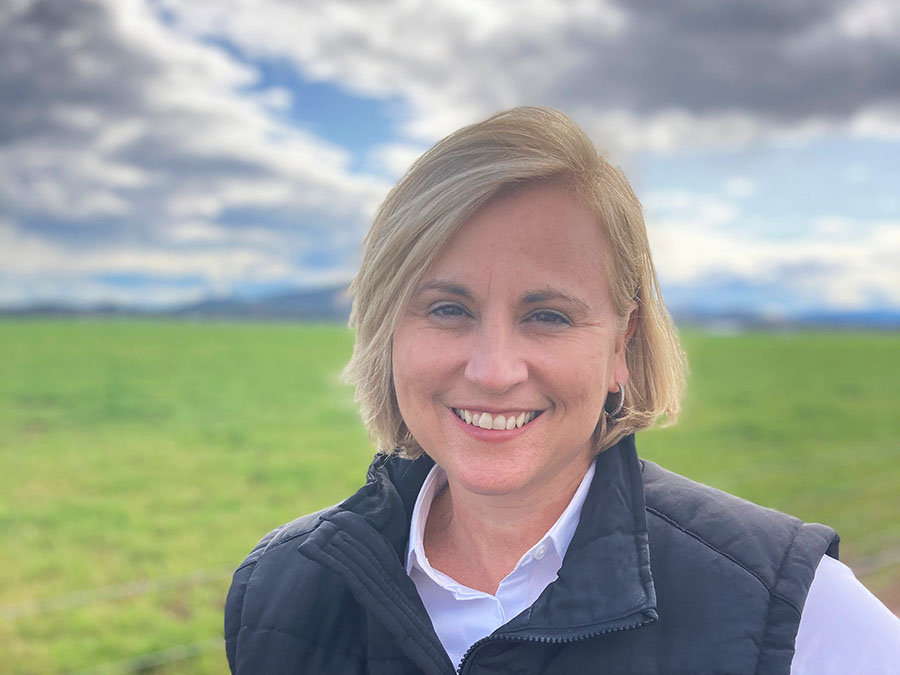 Carmel Onions is the Executive Manager of Agribusiness Sustainability at Commonwealth Bank.
Carmel Onions is the Executive Manager of Agribusiness Sustainability at Commonwealth Bank.
There is a great deal of information and peer group support available to farmers about how they can improve their practices for better ecological health and climate resilience, and this support is rapidly expanding across the sector, but many of these practice changes and projects involve a significant outlay of capital.
Have you ever wondered how to finance investment in natural capital or more sustainable management? Carmel outlines four sources for financing investments in environmental stewardship and best-practice land management.
Grants and rebates
The first method of financing on-farm infrastructure and practice changes is through grants and rebates. While farmers may believe that being awarded grant money is an unattainable goal, there are many millions of dollars available to eligible primary producers each year.
These range in focus, from incorporating new technologies and marketing models to building infrastructure for drought resilience and improving biodiversity. A number of organisations either offer grants or can help identify available grants. The Queensland Rural and Industry Development Authority (QRIDA) is an example of a specialist provider of government financial assistance programs, including loans, grants and rebates. There are similar financial assistance providers in most states and territories.
Another way of finding out if there are any current grants that you may be eligible for is to speak to your local Landcare representative or Natural Resource Management body. They are likely to be aware of schemes, programs and grants that might be applicable to your operation.
Environmental markets
The second method for financing best-practice agriculture is through environmental markets. Carmel notes that the recent rise of environmental markets is effectively a way of bringing finance to farmers as a return for their investment in sustainable practice change. These markets offer farmers opportunities to monetise ecosystem improvement, such as through carbon sequestration and biodiversity protection/enhancement.
Carmel notes that the recent rise of environmental markets is effectively a way of bringing finance to farmers as a return for their investment in sustainable practice change.
By getting baseline measurements recorded through a registered authority as part of a registered project, and then implementing sustainable practice changes, farmers can earn financial incentives through the sale of environmental credits. Environmental markets seek to align economic interests with ecological stewardship, creating a win-win situation for both farmers and the environment. Carmel stresses that these markets come with risks and legal obligations and must be thoroughly considered for their suitability to the individual circumstances of the farming business.
Loans
Another way of financing best-practice agriculture is through green loans, the first of which was the CommBank Agri Green Loan. The CommBank Agri Green Loan is a straightforward financial solution designed to make 'sustainable finance' more available to all farmers, which was historically only available to large corporations due to the high transaction costs and reporting requirements. The loan provides discounted finance for practice changes that enhance environmental outcomes and addresses the gap in available measurement data by having a long list of pre-approved eligible use cases. 'The discount is designed to reward and incentivise farmers for investing in additional sustainable management,' says Carmel.
Farmers can use the loan for various sustainable initiatives, such as installing renewable energy sources or water-saving infrastructure. It can be used to enhance and diversify pasture or crops for greater soil carbon sequestration or to adopt sustainable practices like time-based cell/rotational grazing. It can also be used for initiatives like reducing emissions from effluent, planting additional shelter belts, protecting remnant and riparian areas, and aiding in entering registered environmental projects.
On-farm payback
The final method of financing sustainable practice changes is the one that Carmel is most passionate about: the on-farm payback. She acknowledges that while initial investments need to be made (which can be financed through grants or sustainable loans), the adoption of sustainable practices builds farm productivity, profitability and/or resilience, all of which directly enhance cash flow.
...while initial investments need to be made, the adoption of sustainable practices builds farm productivity, profitability and resilience, all of which directly enhance cash flow.
When speaking about this, Carmel uses the example of introducing shelter belts on grazing land. Firstly, planting trees for shelter belts helps capture and store carbon, contributing to soil health and reducing on-farm net emissions. Additionally, it promotes biodiversity, both in the soil and above it, creating natural habitats that benefit the whole ecosystem and farm, such as biological pest control.
As well as the carbon and biodiversity benefits, livestock experience lower mortality rates, as shelter belts provide shade and reduced wind speed and wind chill. The trees can also reduce erosion, assist in resolving soil health issues, filter nutrients and protect/restore waterways if planted nearby. Furthermore, the enhanced carbon content in the soil results in more nutritious fodder, which leads to better feed efficiency and weight gains.
All in all, shelter belts not only sequester carbon and support biodiversity but also directly benefit livestock production through reduced mortality and better feed efficiency; in other words, they improve profitability.
'It's one small example of a practice, but all of those things build productivity and profitability and increase resilience, which ultimately reduces cash flow variance over time and also environmental risk,' says Carmel. 'Yes, there's an upfront cost, but there's a return on the investment, there's a multi-year payback.'



